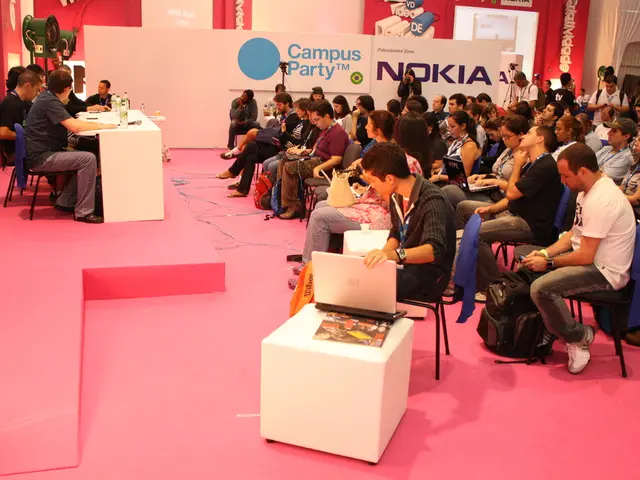Groundbreaking artificial intelligence device integrating human brain functions with silicon chips now accessible.
Shoebox-sized Biological Computer Built with Human Neurons and Silicon Now Commercially Available
A revolutionary new computer that combines traditional silicon-based hardware with living human neurons is now accessible for purchase. The CL1, a groundbreaking invention by Melbourne-based startup Cortical Labs, is marketed as "the world's first code deployable biological computer."
Launching on March 2 of this year, the CL1 makes its entry into the commercial sphere. The price tag for this technological marvel stands at approximately $35,000 per unit, with wider availability anticipated by late 2025.
Inside this compact device, a nutrient-rich broth sustains human neurons as they grow and make contact with a silicon chip. The electrical impulses that pass between the chip and the neurons allow training them to perform specific tasks. In the past, Cortical Labs successfully trained their predecessor model, DishBrain, to play the classic video game Pong, showcasing the system's versatility.
Brett Kagan, chief scientific officer at Cortical Labs, highlighted the CL1's intricate sustaining system – dubbed the perfusion circuit. According to Kagan, this component provides filtration for waste products, temperature control, gas mixing, and circulation pumps, all ensuring the neurons remain alive and active for up to six months.
Researchers hope to employ the CL1 in various scientific fields, particularly in studying brain-related illnesses and developing novel treatments. The combination of biological and AI systems may offer insights into the brain's complex processes otherwise unobtainable through traditional research methods.
However, some scientists have raised ethical concerns regarding the development of "synthetic biological intelligence" like the CL1. While still in its infancy compared to human brains, the potential ramifications of such technology have sparked debates surrounding the nature of consciousness and the possibility of future artificial systems experiencing suffering. Ongoing research aims to improve engineered systems more aligned with the various types and functions of cells within the human brain while minimizing the number of cells needed for accurate representation.
The demand for the CL1 is expected to grow as more researchers explore its potential applications. As the first commercial living computer, the CL1 may pave the way for future advancements in computing, artificial intelligence, and disease research.
The CL1, a commercially available biological computer, is poised to revolutionize science and medical-conditions research, with its potential applications in health-and-wellness and technology sectors. Researchers anticipate using this groundbreaking invention to study brain-related illnesses and develop novel treatments, bridging the gap between traditional methods and understanding the complex processes within the brain.








